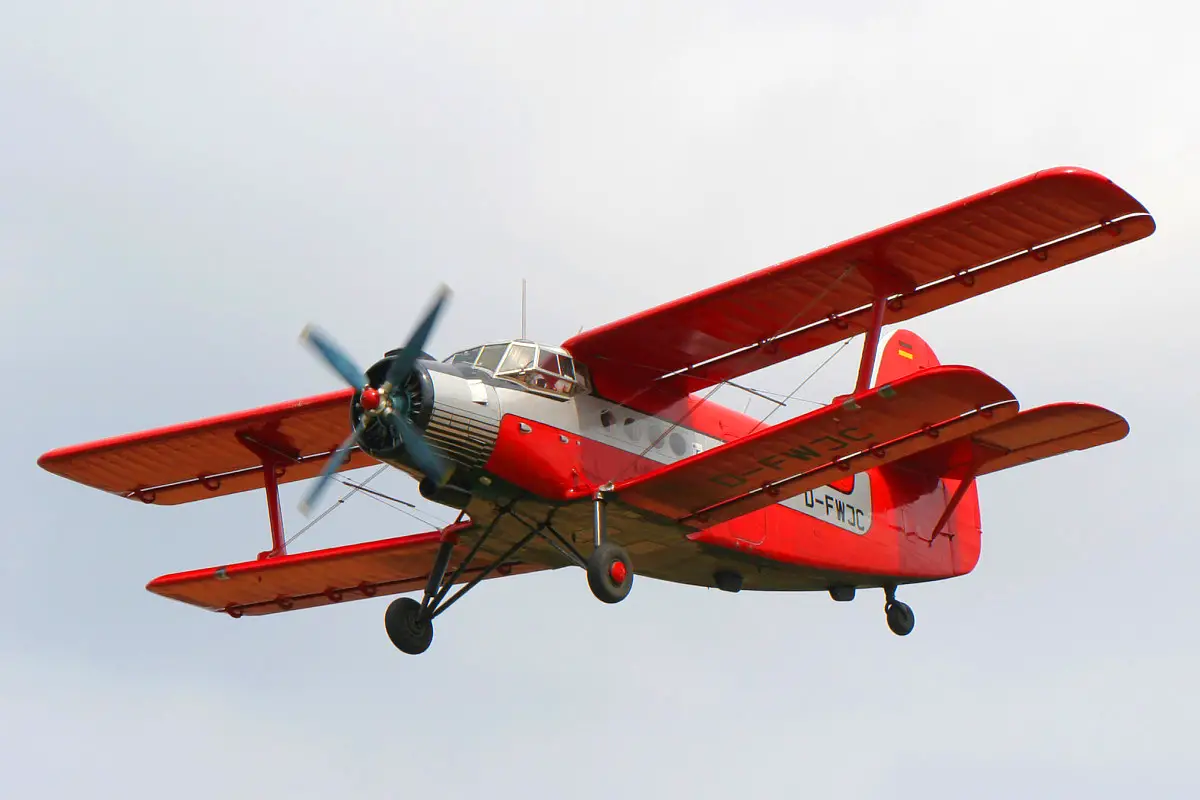The An-2 “Kukuruznik” is a legendary Russian aircraft that has been in operation since 1948. Russians primarily use it for agricultural purposes. At present, approximately 300 of these aircraft are in operation, performing vital roles in regional transportation and agriculture.
Rosaviatsia, the aviation authority of Russia, is currently seeking to formally certify this aircraft that has been in operation for long. Although the process may appear straightforward, it has sparked substantial controversy. The certification procedure has incited protests from aviation workers and operators who are apprehensive about the potential modifications to their fleet.
Modifications, particularly the TVS-2MS version of the An-2, are the focal point of the dispute. This modernized biplane utilizes American-made components, such as a Hartzell propeller and a Honeywell Garrett TR331-12 turboprop powerplant. Aviation workers are concerned that the certification procedure is a strategic maneuver to legalize these modifications, which could potentially decrease the number of operational aircraft.
Klim Galiullin, the head of the AeroChemFleet alliance, has expressed his apprehensions regarding these matters. “AeroChemFleet” is a professional alliance that represents agricultural aviation operators in Russia. In particular, it is an organization that advocates for the rights of companies and employees who employ aircraft such as the An-2 “Kukuruznik” for agricultural purposes, including crop sprinkling, fertilization, and other aerial operations associated with farming.
In early November, his organization submitted a formal letter to Rosaviatsia, requesting the suspension of the certification procedure. They argue that the aircraft’s certification is being based on years of flight history, without the proper technical proof and detailed safety records that modern aviation standards require.
Rosaviatsia, on the other hand, maintains that aircraft modernization is not permissible without appropriate certification. Rosaviatsia aims to reassure operators by assuring them that the current fleet will not face immediate suspension. The regulatory authority stresses the importance of the certification as a legal requirement to guarantee the continued safe operation and possible modernization of these aircraft.
The An-2 has been a reliable aircraft in Russian aviation for decades, which is why the situation is so delicate. Any modifications to their operational status could significantly influence the agricultural and regional transportation sectors. The certification process is an important phase in the aircraft’s long history, as it balances operational requirements, safety regulations, and technological advances.
The operators are genuinely concerned that certification could result in a reduction in the number of aircraft available, which could potentially disrupt agricultural operations. Certification is an essential measure from a regulatory standpoint to guarantee the continued safe and lawful operation of these aircraft.
Rosaviatsia, the Federal Air Transport Agency of Russia, uses a holistic approach to the certification of the An-2 aircraft. They recognize the apprehensions of aircraft operators while concurrently underscoring the critical significance of complying with aviation safety regulations. Regardless of its extensive operational history, no aircraft can legally operate, modify, or maintain without the appropriate certification.
The certification procedure has a rich history. The USSR Council of Ministers initially introduced the An-2 through a decree in 1948. However, the 2019 Federal Aviation Regulations (FAR-21) and other current aviation regulations mandate the provision of comprehensive documentation for all aircraft. This covers either a type certificate or an approval document that predates 1967.
The Ministry of Industry and Trade formally designated the Chaplygin Siberian Aeronautical Research Institute (Sib NIA) as the An-2’s developer in 2013, leading this certification effort. Certification discussions have been ongoing since 2014-2015; however, the formal application was submitted in late 2023.
SibNIA presents a compelling case for certification. The institute maintains that even minor modifications are impossible without proper certification, despite the An-2’s impressive operational history of 76 years and over 150 million flight hours. The absence of a type certificate resulted in the rejection of previous attempts to modify the aircraft, which created a bureaucratic “catch-22” situation.
The certification procedure has been a source of frustration. SibNIA faced numerous obstacles, such as the necessity of conducting extensive testing, including static, dynamic, and flight tests, which the institute at first thought to be excessive. Incomplete archival records further complicate the procedure. Nevertheless, they have since sought to reconcile their differences with a variety of stakeholders.
Rosaviatsia has taken great care to resolve operators’ concerns. They have explicitly stated that they will not suspend the An-2 fleet immediately. No substantial difficulties are anticipated for agricultural operations. Intriguingly, passenger operations certification is not currently a priority, as the An-2 is not currently used for passenger services. Modifications, such as the replacement of folding benches with appropriate passenger seating, would be necessary for this certification.
There is speculation regarding the possible connection between this certification and the TVS-2MS, a modified An-2 that incorporates components manufactured in the United States. Nevertheless, the TVS-2MS manufacturer and Sib NIA have both categorically denied the existence of any such connection. The TVS-2MS has been in limited production since 2011, but its future remains uncertain.
A change in Russian aviation strategy is evident in the broader context. Russia’s emphasis on the LMS-901 Baikal, a domestically developed engine-powered replacement for the An-2, limits the market prospects for the TVS-2MS. This is indicative of a more general trend toward technological self-sufficiency.
Rosaviatsia remains optimistic, expecting the finalization of the certification by the year’s end. The readiness and comprehensiveness of the necessary documentation are the sole determinants of the final phase.
This certification process is not merely a bureaucratic exercise. It is a critical juncture in the life of an iconic aircraft, as it balances historical operational success with contemporary safety requirements, technological modernization, and national aviation strategy.
Official Website of Youtube Channel – Altitude Addicts
